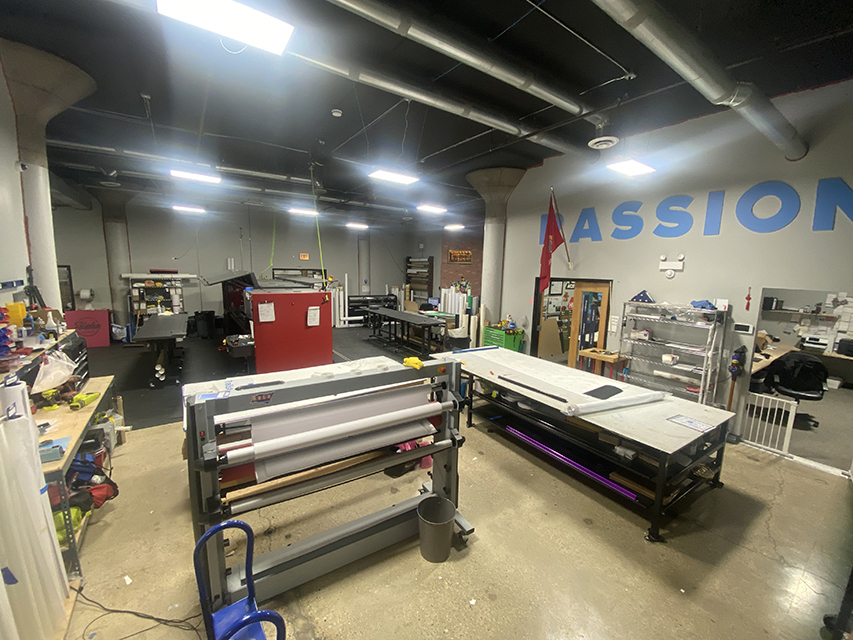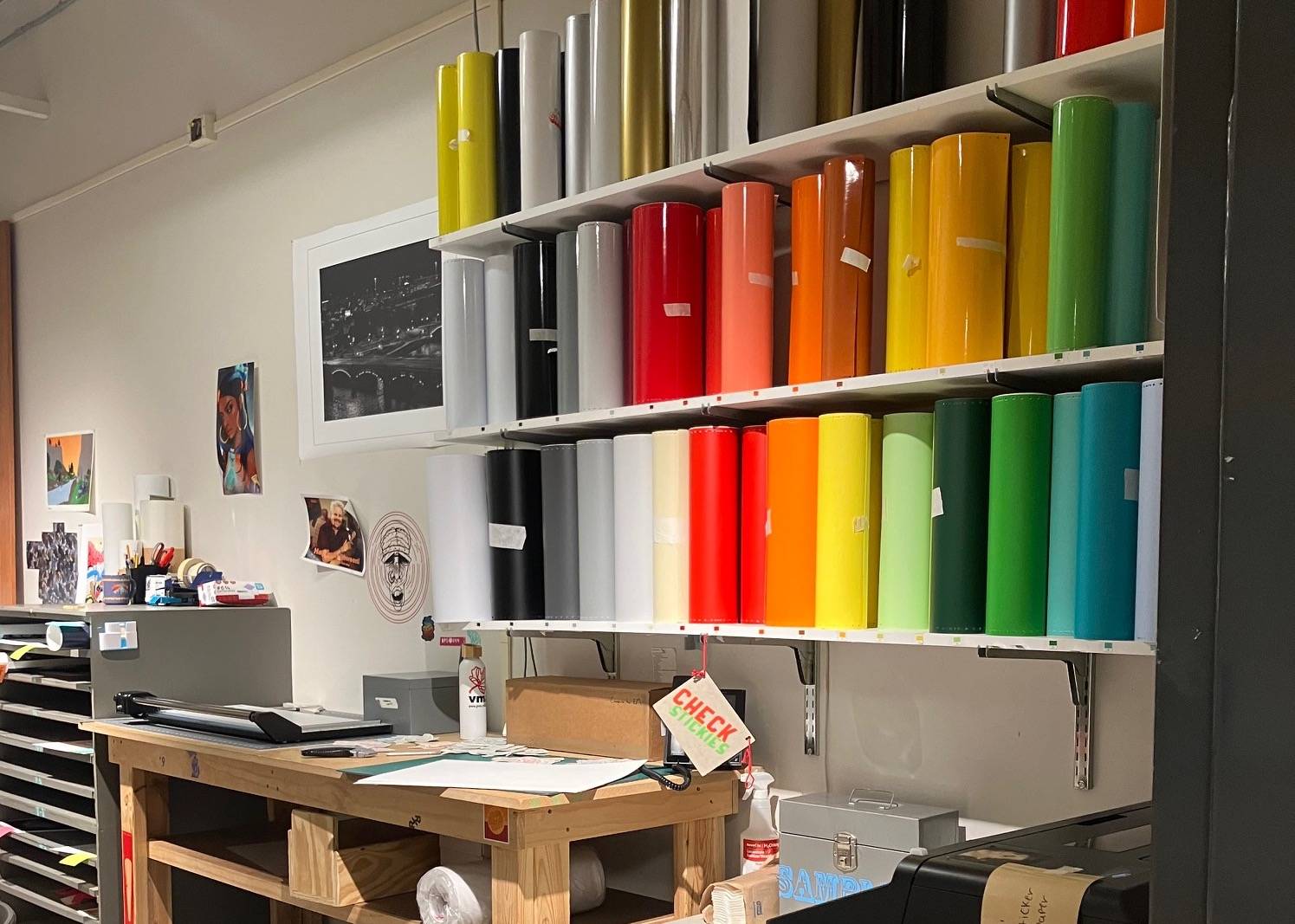Why Every Art Collector Should Know a Print Shop Near Me
Why Every Art Collector Should Know a Print Shop Near Me
Blog Article
The Ultimate Overview to Utilizing Printing Providers for Custom Art Prints
Guiding via the globe of customized art prints needs a clear understanding of numerous printing solutions. Musicians should think about aspects such as printing methods and products to accomplish the desired end result. Each choice, from artwork preparation to color calibration, plays a vital duty in the last product. As they discover these components, musicians can disclose the capacity for their job to attach with audiences in a significant means. What steps can they take to assure their prints stick out?
Recognizing Different Types of Printing Services
Although numerous people might overlook the complexities of printing services, recognizing the various types available is necessary for anyone seeking to create custom-made art prints. The most common types include electronic printing, counter printing, and display printing. Digital printing is preferred for its fast turn-around and capability to produce high-quality photos directly from digital documents, making it suitable for small runs. On the other hand, offset printing deals premium photo high quality and is economical for bigger amounts, utilizing plates to move ink onto paper. Display printing, commonly utilized for fabrics and promotional things, entails pushing ink through a mesh display, permitting for dynamic shades and textures. Each technique has its unique advantages and limitations, making it essential for artists and designers to assess their details needs, such as amount, preferred top quality, and budget plan, before selecting a printing solution that lines up with their artistic vision.
Selecting the Right Materials for Your Prints
Selecting the ideal materials is necessary for achieving high-grade customized art prints. Understanding the numerous types of paper and the significance of ink high quality can significantly influence the outcome. Musicians need to take into consideration these elements to ensure their vision is accurately stood for in the published item.
Paper Types Explained
Choosing the right paper type is important for accomplishing the wanted aesthetic and toughness in custom-made art prints. Numerous alternatives exist, each offering unique qualities. Shiny paper enhances shade vibrancy and information, making it suitable for photography prints. On the other hand, matte paper supplies a softer surface, which is more effective for art work that calls for subtlety and structure. Art paper, frequently made from cotton or alpha cellulose, provides historical top quality and is appropriate for replicating complex information in paints (Print Shop Near Me). In addition, specialty documents, such as watercolor or canvas, can add unique visual results. Eventually, selecting the proper paper type will substantially affect the last discussion, making certain that the art work is both lasting and visually attractive
Ink High Quality Matters
Ink quality plays a necessary duty in the overall success of customized art prints. Premium inks guarantee vivid shades, sharp information, and durability, which are essential for showcasing imaginative job. When selecting printing services, artists ought to consider pigment-based inks over dye-based choices, as they provide far better fade resistance and color stability. In addition, the selection of ink should complement the selected paper type, enhancing the print's visual influence. Environmental factors, such as humidity and temperature level, can also influence ink efficiency; therefore, musicians should inquire concerning ink solutions that withstand these elements. Eventually, investing in superior ink quality can raise the last item, ensuring that the art print stays true to the musician's vision for many years to come.
Discovering Printing Strategies: Digital vs. Standard
While both electronic and traditional printing methods have their special advantages, the decision on which approach to use usually depends upon the particular demands of the artwork. Digital printing masters adaptability and speed, permitting quick turnaround times and the capacity to print on demand. This technique is especially helpful for artists that require one-of-a-kind pieces or small runs, as it eliminates the requirement for considerable arrangement processes.Conversely, conventional printing techniques, such as lithography and display printing, frequently create richer textures and colors, interesting artists seeking a more responsive and genuine finish. These techniques can boost the depth and top quality of the artwork, making them ideal for larger editions. In addition, traditional methods might supply a distinctive aesthetic that digital printing in some cases struggles to replicate. Eventually, the choice between these methods should take into consideration aspects like preferred top quality, quantity, and artistic intent, guiding musicians to one of the most ideal choice for their jobs.

Preparing Your Artwork for Printing
Effectively preparing art work for printing calls for mindful focus to detail, despite the selected printing technique. Artists have to ensure that their documents are produced at the suitable resolution, usually 300 DPI, to keep sharpness and clarity. The proper shade mode, usually CMYK for print, is essential to achieve the wanted color precision. Artists need to additionally consider the measurements of the artwork, making certain to include hemorrhage areas if needed, to avoid any kind of unwanted white sides after trimming.Additionally, file styles play an essential role; TIFF and PDF are commonly favored for top quality prints. Before entry, it is very important to assess the art work for any imperfections or unwanted elements. By thoroughly inspecting these elements, musicians can enhance the chance of their prints aligning with their imaginative vision, eventually leading to an effective printing end result.
The Relevance of Color Calibration and Proofing
Shade calibration and proofing are necessary actions in the printing process, as they assure that the last result properly reflects the musician's vision. Appropriate color calibration guarantees that the shades displayed on the about his display suit those that will certainly be printed. This process includes readjusting the monitor setups, printer accounts, and inks to achieve a constant color representation.Additionally, proofing enables musicians to preview their work before the final print run. This stage enables them to identify and fix any type of inconsistencies in saturation, shade, or detail, therefore lessening costly errors. By utilizing digital or hard-copy proofs, musicians can make informed choices concerning modifications required for suitable results.Incorporating color calibration and proofing right into the printing operations not just boosts the quality of the end product yet also fosters a reliable partnership in between the artist and the printing service, assuring satisfaction and integrity to the initial art work.
Selecting the Perfect Dimension and Layout for Your Prints

Advertising and Selling Your Personalized Art Prints
Marketing and selling personalized art prints needs a solid brand name identification to stand out in an open market. Reliable on the internet promo strategies and the strategic use social media systems can considerably boost visibility and interaction. By incorporating these elements, artists can develop a compelling presence that draws in potential buyers.
Building Your Brand Name Identification
Developing a strong brand identification is crucial for artists looking to successfully market and sell their custom art prints. This identity encompasses the artist's one-of-a-kind style, worths, and tale, which resonate with potential buyers. Musicians must create a natural visual visibility across all systems, including logo designs, color design, and typography that reflect their imaginative vision. Furthermore, a clear goal declaration assists communicate the musician's their website objective and enthusiasm. Engaging narration regarding the ideas behind each item can cultivate psychological links with the target market. Consistency in messaging, whether on social media or product packaging, improves recognition and trust. By meticulously curating their brand name identity, musicians can separate themselves in an open market, attracting devoted consumers that appreciate their artistry.
Reliable Online Promo Strategies
What strategies can artists utilize to successfully promote their custom-made art prints online? Developing a professional website showcasing the art work is vital. This site must consist of comprehensive summaries and high-grade photos to involve potential purchasers. In addition, musicians can use email marketing by constructing a client listing to share updates, promos, and brand-new launches. Teaming up with blog owners and influencers in the art neighborhood can broaden reach and trustworthiness. Offering special items or limited-time discounts can additionally produce necessity, motivating acquisitions. Optimizing web content for search engines via appropriate search phrases will certainly enhance presence. Maintaining a blog site concerning the artistic process can bring in art enthusiasts, cultivating a deeper connection with the target market and boosting the general advertising and marketing strategy.
Making Use Of Social Media Platforms
Social media site platforms function as effective tools for musicians aiming to market and market their customized art prints. By leveraging systems like Instagram, Facebook, and Pinterest, musicians can display their job to a substantial audience. Involving visuals and tactical hashtags can enhance visibility, attracting potential purchasers to their accounts. On a regular basis uploading web content, such as behind-the-scenes processes or new styles, assists maintain target market interest and promotes a sense of community. Additionally, musicians can utilize targeted marketing to get to details demographics, enhancing the possibilities of sales. Collaborations with influencers or various other musicians can additionally amplify direct exposure. Ultimately, a well-curated social media sites existence not only promotes customized art prints yet likewise builds a faithful client base in time.
Regularly Asked Questions

How Do I Locate Reputable Printing Solution Providers?
To find reliable printing provider, one must research online evaluations, seek referrals from peers, contrast portfolios, request samples, and assess client service responsiveness. This extensive strategy warranties notified decisions and sufficient results.
What Is the Normal Turnaround Time for Custom Prints?
The common turn-around time for custom prints varies by supplier, but normally varies from a couple of days to 2 weeks. Variables influencing this consist of order size, complexity, and the certain printing methods made use of.
Can I Obtain a Refund if I'm Not Satisfied With My Prints?
The inquiry of getting a reimbursement for unacceptable prints usually depends on the details printing solution's policies. Numerous firms provide contentment warranties, while others may have stringent return conditions, highlighting the significance of evaluating terms beforehand.
Exist Any Kind Of Hidden Prices Connected With Printing Solutions?
Numerous printing solutions may consist of hidden prices such as configuration fees, shipping charges, or added fees for particular products. It's important for clients to ask about all prospective Visit Your URL expenses before settling their order.
How Can I Guarantee My Prints Are Ecologically Friendly?
To guarantee prints are eco-friendly, one must pick environmentally friendly inks, recycled paper, and sustainable printing methods. Investigating printing solutions that focus on sustainability and getting qualifications can better guarantee very little ecological effect in the printing process. Steering via the world of personalized art prints needs a clear understanding of numerous printing solutions. Lots of individuals might overlook the details of printing services, recognizing the numerous kinds available is crucial for any person looking to create customized art prints. The most typical types consist of electronic printing, balance out printing, and display printing. Successfully preparing art work for printing calls for careful attention to detail, regardless of the chosen printing technique. Prints intended at galleries could require typical sizes to assist in framing, whereas one-of-a-kind formats might appeal to enthusiasts looking for something distinctive.Lastly, the printing solution's capacities must be reviewed.
Report this page